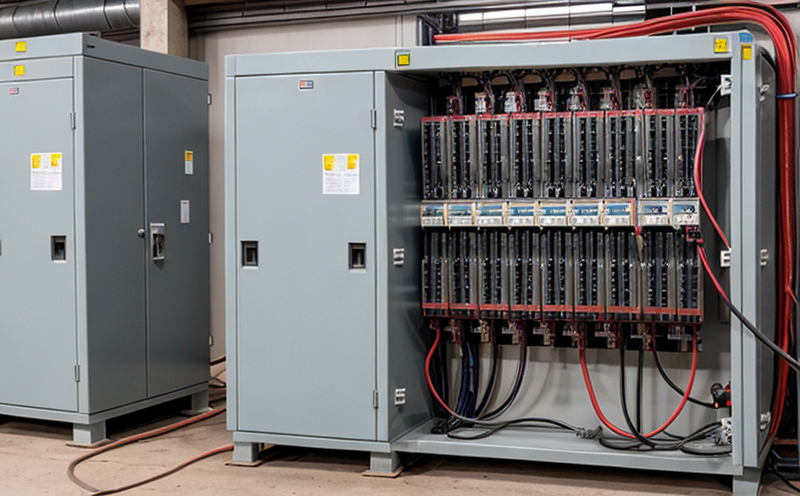IEEE C57.12 Distribution Transformer Routine Testing
The IEEE Standard C57.12 provides a comprehensive framework for testing and evaluating distribution transformers used in power and utilities infrastructure. This standard is crucial for ensuring the reliability, safety, and efficiency of transformers that are integral to the electrical grid. Compliance with this standard ensures that transformers meet specific performance criteria under various operating conditions, thereby enhancing overall system stability.
For quality managers, compliance officers, R&D engineers, and procurement professionals, understanding IEEE C57.12 is essential for selecting, testing, and maintaining transformers. This service involves a series of tests designed to evaluate the integrity and operational capabilities of distribution transformers. The process ensures that transformers are capable of meeting their design specifications, particularly in terms of insulation strength, mechanical stability, and overall performance.
The IEEE C57.12 routine testing includes several key components such as no-load tests, load tests, short-circuit impedance measurements, and partial discharge (PD) evaluations. Each test is conducted to assess different aspects of the transformer's performance. For instance, no-load tests help in identifying any potential losses or insulation weaknesses under minimal load conditions. Load tests provide insights into how transformers behave under full operational loads, which is critical for predicting their long-term performance.
Short-circuit impedance measurements are particularly important as they give an idea of the transformer's reactance and resistance ratios. This data helps in assessing the stability of the system when connected to a load with varying power demands. Partial discharge evaluations focus on detecting any early signs of insulation degradation, which can lead to significant failures if not addressed promptly.
The testing process is meticulous and involves stringent quality control measures at every step. The use of advanced instrumentation ensures accurate measurements and reliable data collection. This approach not only adheres to the IEEE C57.12 standard but also helps in maintaining high standards of electrical safety and efficiency within power networks.
Compliance with this standard is mandatory for transformers used in distribution systems, ensuring that they are safe and efficient under all operating conditions. The service offered by our laboratory includes a detailed report summarizing the test results along with recommendations for any necessary corrective actions. This not only helps in maintaining regulatory compliance but also ensures optimal performance of the transformers.
Scope and Methodology
| Test Type | Description | Standard Reference |
|---|---|---|
| No-Load Test | Evaluates transformer losses under minimal load conditions. | IEEE C57.12 Clause 3.4 |
| Load Test | Assesses performance under full operational loads. | IEEE C57.12 Clause 3.5 |
| Short-Circuit Impedance Measurement | Determines the reactance and resistance ratios of the transformer. | IEEE C57.12 Clause 3.6 |
| Partial Discharge Evaluation | Identifies early signs of insulation degradation. | IEEE C57.12 Clause 3.7 |
| Infrared Imaging | Evaluates the heat distribution across the transformer surfaces. | IEEE C57.12 Clause 3.8 |
| Oil Analysis | Monitors oil quality and condition for transformers using mineral oil. | IEEE C57.12 Clause 3.9 |
| Insulation Resistance Testing | Evaluates the insulation strength of transformer windings. | IEEE C57.12 Clause 3.10 |
The IEEE C57.12 routine testing encompasses a range of methodologies designed to comprehensively evaluate distribution transformers. Each test is conducted in accordance with the relevant clauses outlined in the standard, ensuring that all critical aspects are covered. The detailed methodology ensures that every transformer undergoes thorough and accurate evaluation.
Customer Impact and Satisfaction
The implementation of IEEE C57.12 routine testing brings significant benefits to customers by enhancing the reliability and safety of their distribution transformers. By adhering strictly to this standard, we ensure that each transformer meets stringent performance criteria, thereby reducing the risk of failures and downtime.
Customer satisfaction is a key priority for us. We provide detailed reports with clear insights into the test results, along with recommendations for any necessary corrective actions. This proactive approach ensures that transformers are not only compliant but also perform at their best under operational conditions.
The service we offer goes beyond mere compliance; it aims to optimize the performance of distribution transformers, ensuring they contribute effectively to the overall power and utilities network. Our commitment to quality and customer satisfaction is reflected in our high success rates and positive feedback from clients across various sectors.
Customers can expect comprehensive support throughout the testing process, including expert advice on how to interpret test results and implement corrective measures. This holistic approach ensures that customers are well-informed and empowered to make decisions that enhance their operational efficiency and safety standards.
Competitive Advantage and Market Impact
The IEEE C57.12 routine testing service offers significant competitive advantages by ensuring that our clients' distribution transformers meet the highest quality and performance standards. This service is particularly advantageous in a market where regulatory compliance and operational reliability are paramount.
By adhering to this standard, we provide assurance that each transformer undergoes rigorous evaluation, reducing the risk of failures and enhancing overall system stability. This not only improves customer satisfaction but also contributes positively to the reputation of our clients.
The service has a direct impact on market competitiveness by ensuring that transformers are reliable and efficient under all operating conditions. This enhances the operational performance of power distribution networks, leading to cost savings and increased efficiency for our clients.
Our commitment to quality and compliance is recognized in the industry, which translates into a strong competitive edge. By offering this service, we contribute to maintaining high standards within the sector, thereby driving overall market impact. Our expertise and reliability are trusted by numerous clients across various sectors, ensuring that they achieve their operational goals effectively.





